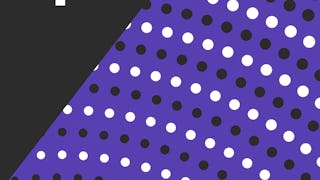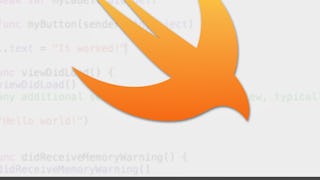Introduction to Swift Programming is the first course in a four part specialization series that will provide you with the tools and skills necessary to develop an iOS App from scratch. By the end of this first course you will be able to demonstrate intermediate application of programming in Swift, the powerful new programming language for iOS. Guided by best practices you will become proficient with syntax, object oriented principles, memory management, functional concepts and more in programming with Swift.

Enjoy unlimited growth with a year of Coursera Plus for $199 (regularly $399). Save now.

Introduction To Swift Programming
This course is part of iOS App Development with Swift Specialization

Instructor: Parham Aarabi
80,619 already enrolled
Included with
(1,437 reviews)
Skills you'll gain
Details to know

Add to your LinkedIn profile
5 assignments
See how employees at top companies are mastering in-demand skills

Build your subject-matter expertise
- Learn new concepts from industry experts
- Gain a foundational understanding of a subject or tool
- Develop job-relevant skills with hands-on projects
- Earn a shareable career certificate

There are 6 modules in this course
Meet the teaching staff, get oriented to the platform, set up your work environment and get ready to program! We wish to remind you from the start that to take part in this course (and the full specialization) it is required to have Mac computer and, though not required, ideally an iPhone, iPod, or an iPad. This course has been designed and tested (and content delivered) on a Mac. While we are aware of hacks and workarounds for running OSX in a virtual machine on Windows, we do not recommended a PC. To find out of this specialization is for you, download the SHIFT Photo Editing app at http://beautifulapps.mobi and try it out. If you take this specialization, then you will learn to create an app similar to SHIFT.
What's included
5 videos4 readings1 assignment
In this module we will introduce the basic concepts of Swift. To begin you will learn variable declaration, different types, and program control mechanisms. Here we start to build the foundation of iOS app development with Swift. We hope you enjoy the journey.
What's included
6 videos1 reading1 assignment
This unit continues with further exploration of swift programming. Building on our current skill set we will work with Classes, Structs, Enums, Protocols, and object-oriented principles.
What's included
4 videos1 reading1 assignment
In this module we will wrap up with lessons targeting advanced examples in Swift. We’ll look at a detailed example of an image filter which will allow us to manipulate pixels and create filter effects (such as change contrast).
What's included
2 videos1 reading1 assignment
You did it! You've come to the end of this first course. We sum up with a capstone peer assessment assignment where you will create your own filter and demonstrate what you've learned over these weeks. Please read the instructions carefully, and have fun!
What's included
2 readings1 assignment1 peer review
OPTIONAL - In this module we compare some of the differences between Swift and Objective C programming languages. Join us as we migrate those of you familiar with Objective C to the world of Swift. Hopefully you find programming in Swift fast, easy and interactive.
What's included
6 videos1 reading
Earn a career certificate
Add this credential to your LinkedIn profile, resume, or CV. Share it on social media and in your performance review.
Instructor

Offered by
Explore more from Mobile and Web Development
 Status: Free Trial
Status: Free TrialUniversity of California, Irvine
 Status: Free Trial
Status: Free Trial Status: Free Trial
Status: Free Trial Status: Free Trial
Status: Free TrialLearnQuest
Why people choose Coursera for their career




Learner reviews
1,437 reviews
- 5 stars
47.17%
- 4 stars
23.65%
- 3 stars
10.25%
- 2 stars
6.76%
- 1 star
12.14%
Showing 3 of 1437
Reviewed on Aug 24, 2019
Easy to grasp a new programming language. Swift programming concepts such as closures, optionals clearly explained. Good course.
Reviewed on Oct 7, 2016
Other than the fact that things are thought on an older version of swift, I don't find anything wrong about this course. It's been a great learning experience.
Reviewed on Feb 4, 2016
This is a great starter course, the Reading Materials are a great way to learn directly from the source with a clearer understanding thanks to the videos. Thank you!

Open new doors with Coursera Plus
Unlimited access to 10,000+ world-class courses, hands-on projects, and job-ready certificate programs - all included in your subscription
Advance your career with an online degree
Earn a degree from world-class universities - 100% online
Join over 3,400 global companies that choose Coursera for Business
Upskill your employees to excel in the digital economy
Frequently asked questions
To access the course materials, assignments and to earn a Certificate, you will need to purchase the Certificate experience when you enroll in a course. You can try a Free Trial instead, or apply for Financial Aid. The course may offer 'Full Course, No Certificate' instead. This option lets you see all course materials, submit required assessments, and get a final grade. This also means that you will not be able to purchase a Certificate experience.
When you enroll in the course, you get access to all of the courses in the Specialization, and you earn a certificate when you complete the work. Your electronic Certificate will be added to your Accomplishments page - from there, you can print your Certificate or add it to your LinkedIn profile.
Yes. In select learning programs, you can apply for financial aid or a scholarship if you can’t afford the enrollment fee. If fin aid or scholarship is available for your learning program selection, you’ll find a link to apply on the description page.
More questions
Financial aid available,

